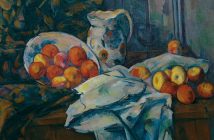Ever since Andy Warhol first swept ink through a fine silk mesh and revealed a technicolour portrait of Marilyn Monroe – the dollar bill was his first, but it was his copy of a publicity still of Monroe from Niagara which captured the public’s imagination – American artists have used print-making to cast a lens on the country, recording its turbulent times and reflecting on its social dynamism to create some of the most iconic images to have emerged from American art in modern times.
Now, in the first exhibition of its kind in the UK, featuring works not only from its extensive collection but gathering significant pieces from, among others, New York’s Museum of Modern Art and Washington’s National Gallery of Art, the British Museum walks us through six decades of American history via the medium of print-making and its chief proponents; the changing styles, the evolving techniques, the political commentary that makes it such an intrinsic element of American culture.
 Fittingly, the exhibition opens with Warhol’s wall-filling diptych of the screen star and the pop art pop culture that burst onto the East and West coasts in the 1960s. Such colourful commentary on America’s increasingly consumerist culture, Lichtenstein, Warhol and Rosenquist might seem ubiquitous now but it was a sharp departure from the abstract expressionism from the post-war years and triggered a new expression of the American art form that would weave synonymously with the events of the day.
Fittingly, the exhibition opens with Warhol’s wall-filling diptych of the screen star and the pop art pop culture that burst onto the East and West coasts in the 1960s. Such colourful commentary on America’s increasingly consumerist culture, Lichtenstein, Warhol and Rosenquist might seem ubiquitous now but it was a sharp departure from the abstract expressionism from the post-war years and triggered a new expression of the American art form that would weave synonymously with the events of the day.
It’s this that is the essence of this exhibition; observing evolving techniques and styles in American print culture that both reflects changing times and provides commentary on its history. Through twelve rooms we journey chronologically from the vibrant comic-like Lichtenstein giving way to the minimalism and conceptualism in the 1970s, where artists such as Brice Marden and Donald Judd explore form and texture, and as techniques become increasingly sophisticated, the relatively clunky colour palettes of early screen-printing begin to progress towards the photorealism of the polychromatic works of the 1970s and 80s.
With the new medium, artists were clearly learning on the job (as many video interviews through the exhibition testify) with early ground-breaking lithographs of Robert Rauschenberg – his ‘Accident’ denoting the breaking stone in the press being incorporated into the work – to the experimentation of Ed Ruscha’s sampling of different materials, from raw eggs to red wine, coffee to cherry pie.
Then, of course, there is the social commentary. American prints provide a vivid and varied commentary on a period of great change for US society. The exhibition features works such as Rauschenberg’s rocket-sized Sky Garden from his Stoned Moon print series (marking the 1969 moon landings), whilst other works touch on darker themes such as President Kennedy’s assassination in 1963, the Vietnam War, the struggle for civil rights and, later, the AIDS crisis and issues of gender and identity.

Detail from Robert Rauschenberg ‘Sky Garden’ (1969)
As comprehensive a walk through six decades of American print art as this is, at times it lacks detail of the historical context. With the exception of a timeline denoting key events from Kennedy’s election to present, and the odd mention in the exhibit captions and room introductions, it might seem less prescriptive if there were accompanying exhibits to aid the visual context, but that may pedestrianize what is, ultimately, a fascinating perspective on contemporary America through a thoroughly American medium.
The American Dream: pop to the present runs at the British Museum until 18th June 2017. Tickets are £16.50. Free curators’ introductions are available on 27th April, 18th May and 15th June. For more information about the exhibition, including bookings, opening hours and details of daytime lectures and talks, visit americandreamexhibition.org.




